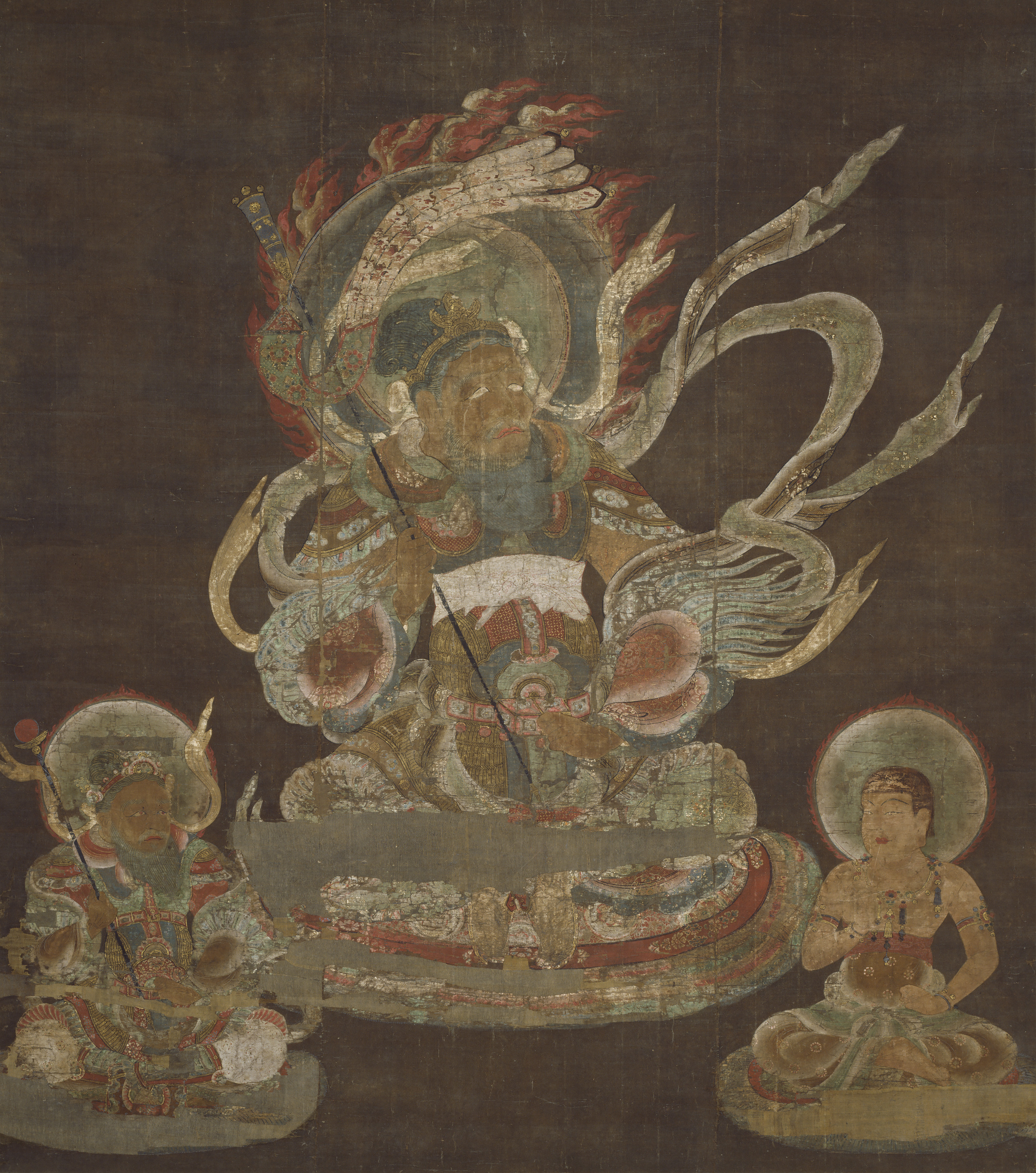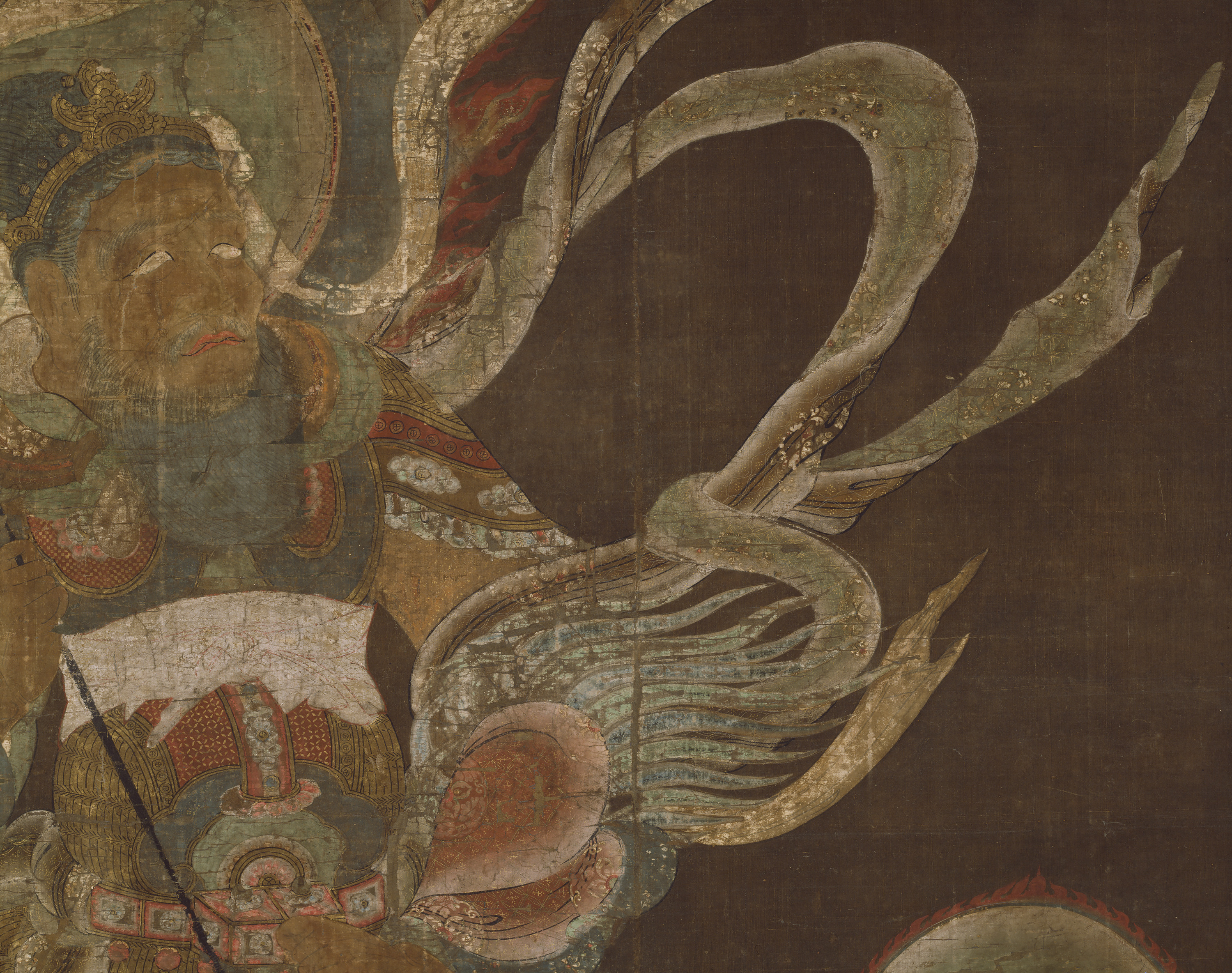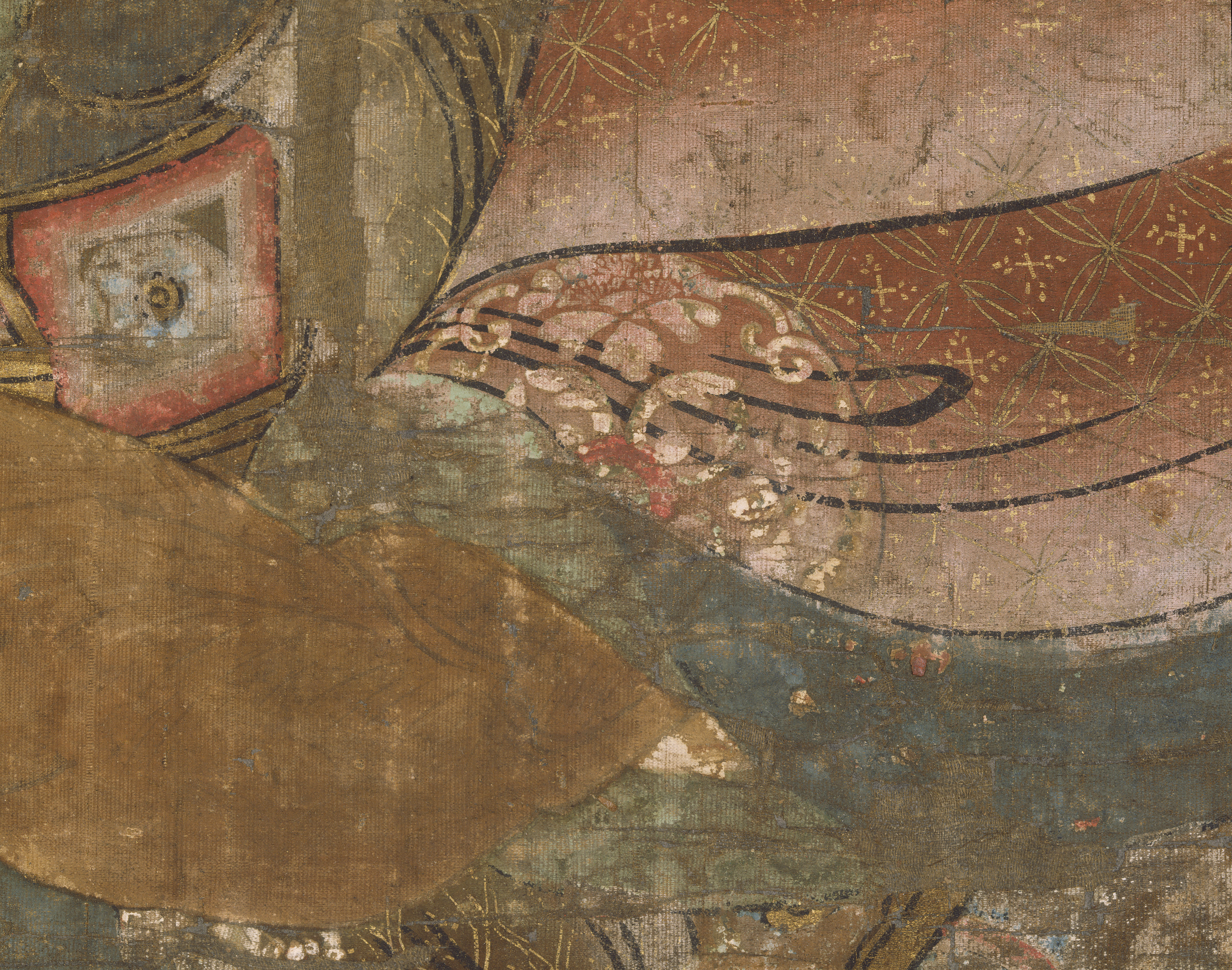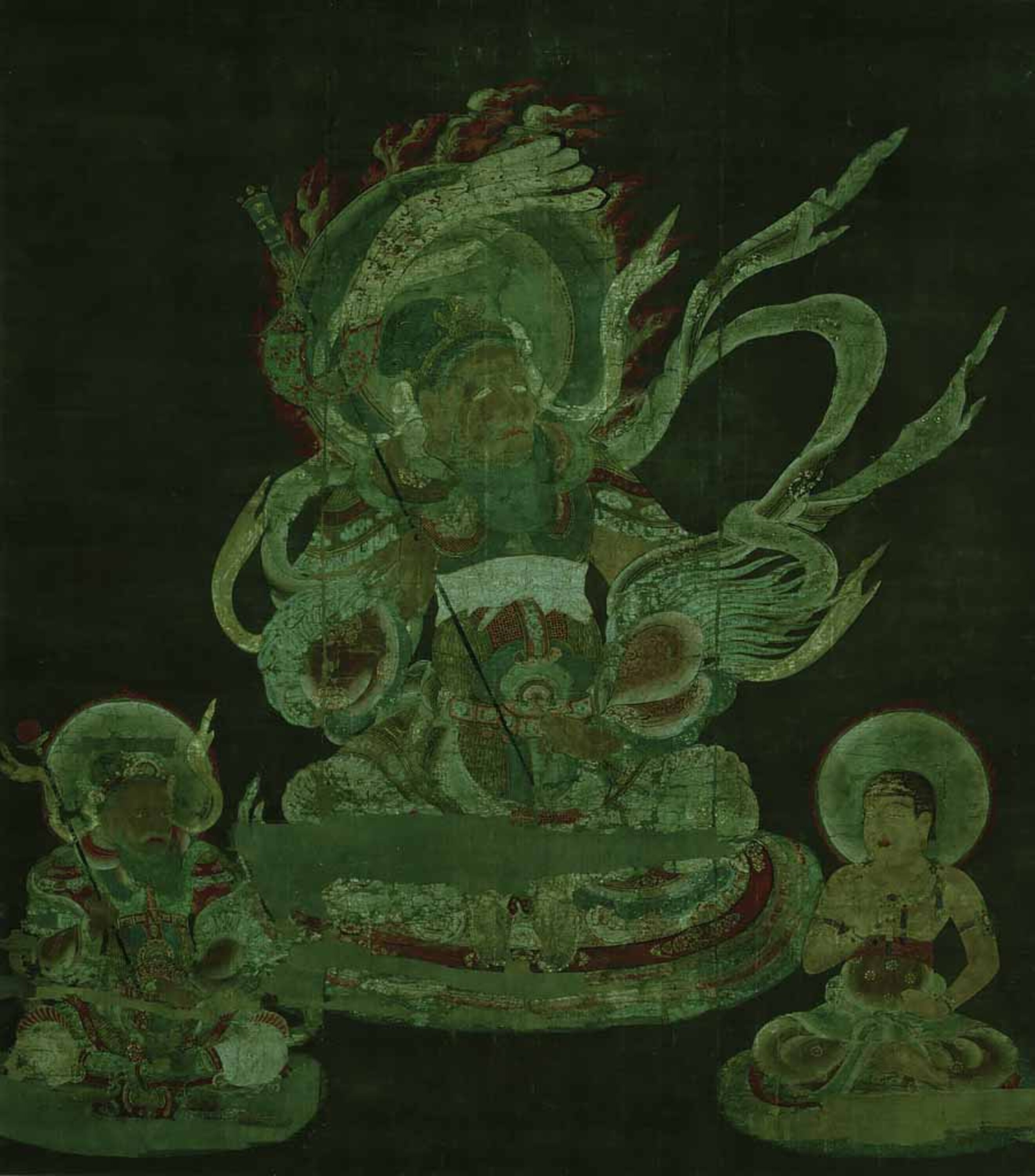- TOP
- Fu-ten (Vayu)
Overview
National Treasure
Fu-ten (Vayu)
- Museum No.
- AK283-3
Showing 1-6 of 5
| Title | Fu-ten (Vayu) |
|---|---|
| Designation | National Treasure |
| Artist | |
| Category | Painting(A), Buddhist Painting, Esoteric Buddhist Painting |
| Country | Japan |
| Period | Heian Late |
| Century | 12th |
| Year | 1127 |
| Quantity | |
| Materials | |
| Dimensions | Height 144cm Width 127cm |
| Inscription by | |
| Signature/Seals Etc | |
| Donor |
Included Works
 Twelve Devas
Twelve Devas
AK283 Gatten (Candra)
Gatten (Candra)
AK283-1 Nitten (Surya)
Nitten (Surya)
AK283-2 Sui-ten (Varuna)
Sui-ten (Varuna)
AK283-4 Rasatsuten (Saksasa, Nairrti)
Rasatsuten (Saksasa, Nairrti)
AK283-5 Enma-ten (Yama)
Enma-ten (Yama)
AK283-6 Ka-ten (Agni)
Ka-ten (Agni)
AK283-7 Taishaku-ten (Indra)
Taishaku-ten (Indra)
AK283-8 Ishana-ten (Isana)
Ishana-ten (Isana)
AK283-9 Bishamon-ten (Vaisravana)
Bishamon-ten (Vaisravana)
AK283-10 Bon-ten (Brahman)
Bon-ten (Brahman)
AK283-11 Ji-ten (Prthivi)
Ji-ten (Prthivi)
AK283-12
This object may be one within a set or the title of a set. To see all objects in the set, perform a Category Search by the Museum Number below, entering numerals only before the hyphen.















Fu-ten is one of the Twelve Devas that were made in 1127 to be hung at the annual, New Year's ceremony of esoteric prayers, held at Shingon-in in the Imperial Palace. The scrolls were originally owned by Kyoogokoku-ji (To-ji) Temple.
The twelve devas are the guardians of the four quarters and four semi-quarters, up and down, and the sun and moon. Fu-ten guards the northwest semi-quarter.
The characters for fu-ten mean "wind deva," and, accordingly, Fu-ten holds a scepter of the wind in his right hand. He is depicted as an old man. The elongated petals on the hosoge flower and arabesque patterns emanate a sense of dignified substance. Heavy layers of color on the face, large-scale patterns, sophisticated brushwork and a double-layered halo all contribute to the uniqueness of this elaborate Fu-ten.
Japan-Heian-Late